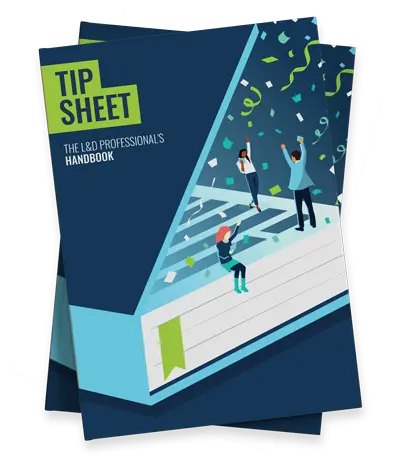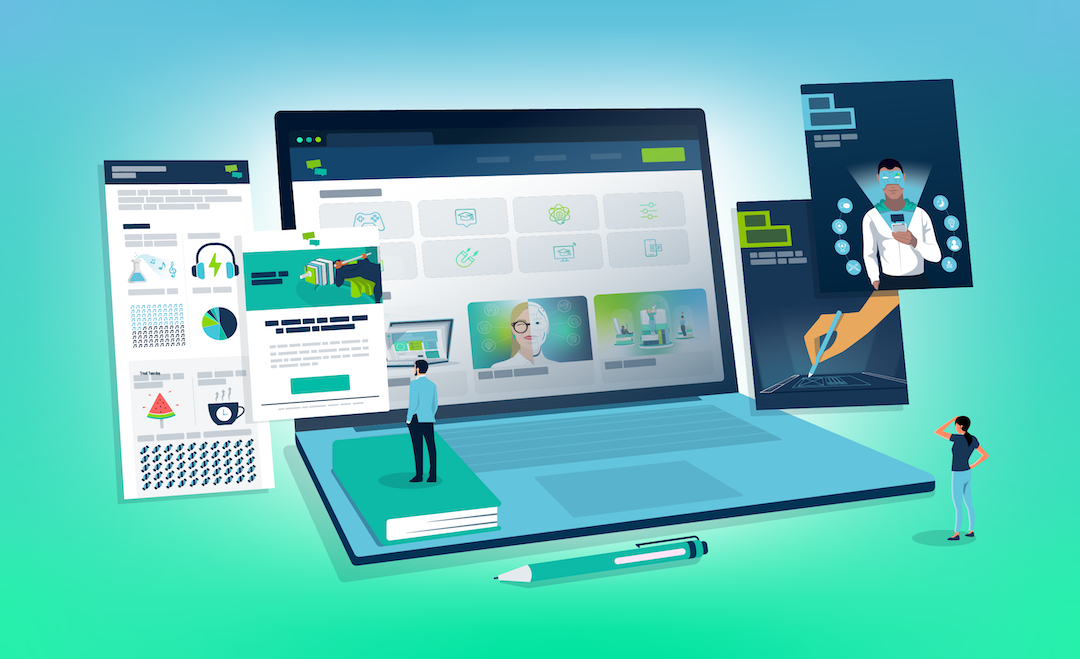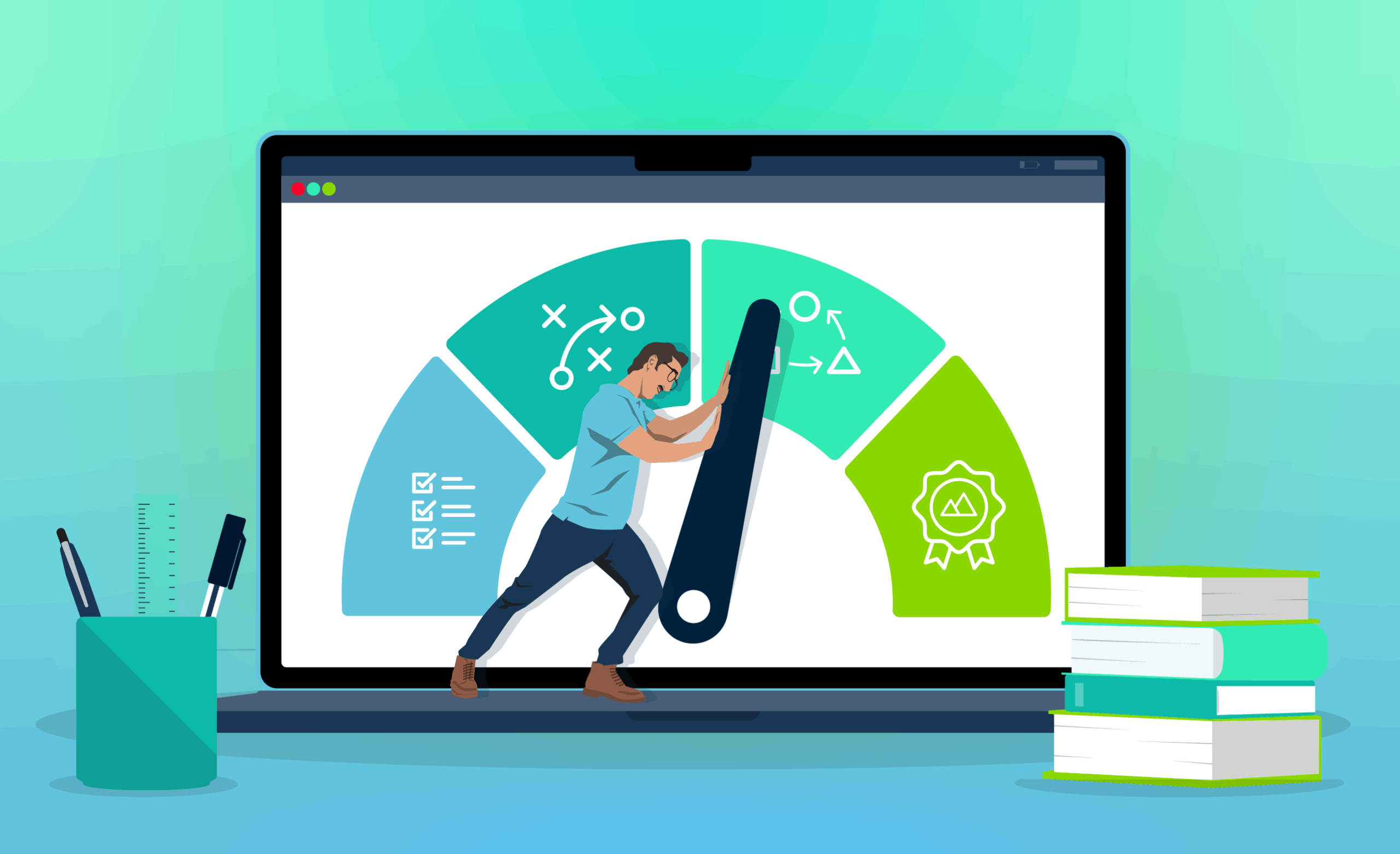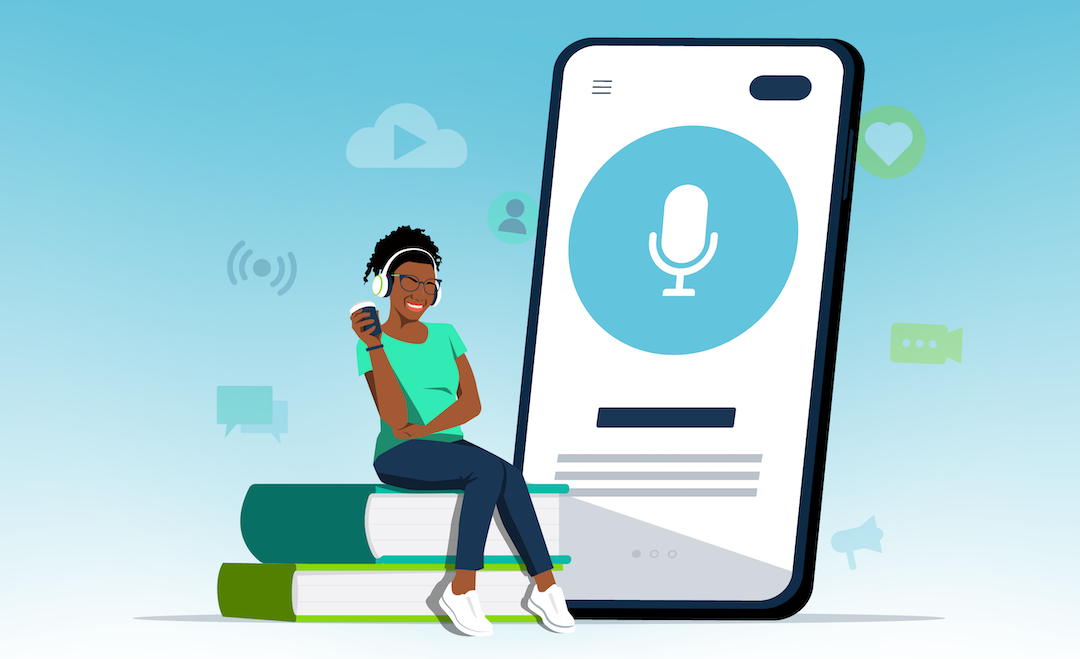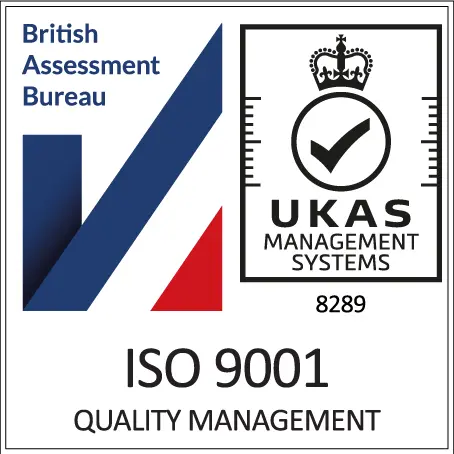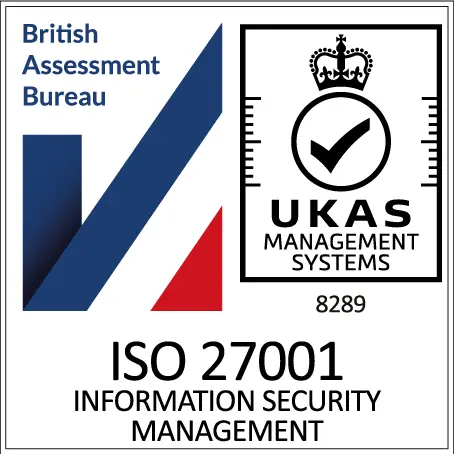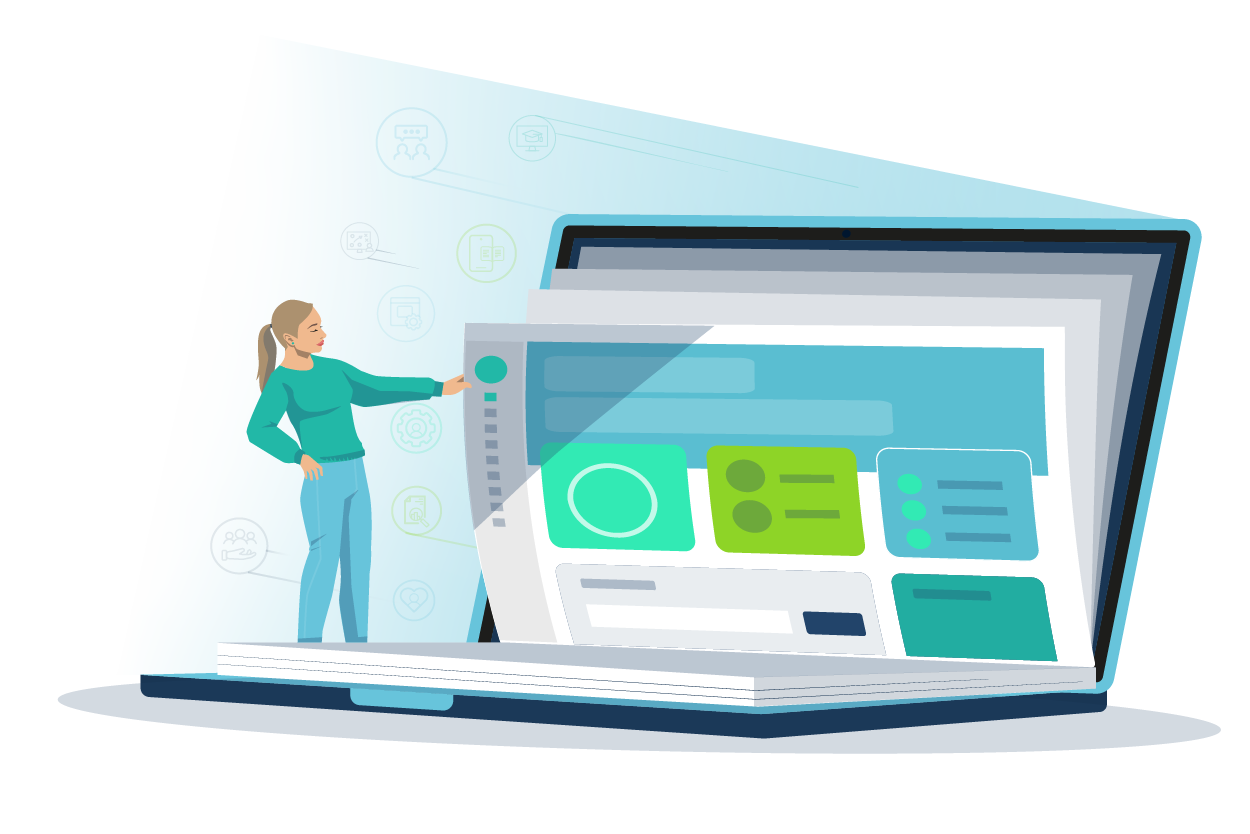
The world of learning and development (L&D) and its evolving technology landscape can often feel like a maze of new buzzwords, jargon, and technical terms. To help you confidently navigate this terrain, we’ve compiled the ultimate L&D glossary!
Ever caught yourself silently asking, ‘WTF is an LRS?’ Or pretending to understand the difference between microlearning and nanolearning? If so, this resource is exactly what you need.
Consider this glossary your cheatsheet for impressing your colleagues and finally understanding what your LMS vendor means when they’re talking about SCORM. We’ve got 50+ terms to demystify, grouped by category for easy comprehension.
Ready to slice through the jargon with our buzzword machete? Well, hit that bookmark button and let’s get started!

General L&D Terms
Andragogy:
The art and science of teaching adults (andragogy being a Greek term that roughly translates to ‘man-leading’). After all, unlike kids, adults bring life experience, clear goals, and a hyper-low tolerance for fluff to the table. As such, we need to adapt our learning and development experiences accordingly.
Dig Deeper: What is Malcolm Knowles’ Adult Learning Theory?
Pedagogy:
The classic art of teaching children (derived from a Greek term meaning ‘child-leading’). With this approach, structure and guidance take centre stage. After all, kids thrive on clear instructions, repetition, and playful exploration. They also benefit from an authoritative teacher figure steering the process.
Blended Learning:
The ultimate learning smoothie, mixing digital convenience (like eLearning modules) with genuine human connection (like live workshops). The online and offline elements should be integrated and independent, with each playing a vital role in the overall learning journey. This is the perfect marriage of flexibility and accountability.
Dig Deeper: Blended Learning: Benefits & Best Practice
Hybrid Learning:
Hybrid learning is a choose-your-own adventure approach to education, where learners decide whether to join in-person or online. Unlike blended learning (which mixes both modalities), hybrid experiences let learners stick to one lane if they so choose. Technology, like video conferencing tools, helps to keep everyone in the loop.
Dig Deeper: Hybrid Learning: How to Build a Learning Model That Works for Everyone
Microlearning:
Microlearning is an educational strategy that delivers information to learners in bite-sized portions. Each experience is designed to be easily digestible while satisfying a clear learning objective. The average microlearning experience is about 3-10 minutes long, which helps it to fit neatly into your learners lives.
Dig Deeper: Microlearning Explained: A Guide to Bite-Sized Learning
Nanolearning:
This is microlearning’s even more streamlined sibling. It delivers information in ultra-short, informal bursts. While there’s no magic number, we’ve found that 45 seconds is a good sweet spot. This ‘just-in-time’ approach means learners get exactly what they need, precisely when they need it.
Dig Deeper: Nanolearning: Your Big Guide to Short-Form Learning
Gamification:
Short on learner engagement? Gamification takes the fun parts of games (think experience points, badges, and leaderboards) and uses them to help incentivise your learners. It can turn even the most dull tasks (like completing compliance training) into dopamine-fuelled quests that feel epic.
Dig Deeper: What is Gamification? Definition, Examples & Key Strategies
Social Learning:
Monkey see, monkey do. As humans, we often learn best by watching, copying, and chatting with others. Think discussion forums, peer feedback, or even just overhearing a colleague’s ‘a-ha!’ moment. This approach is often central to breaking down knowledge silos and creating a high-performance learning culture.
Dig Deeper: Social Learning: Your Complete Guide to Peer-to-Peer Learning
Self-Paced Learning:
Forget rigid schedules. This approach emphasises free-form exploration at the learner’s preferred pace. That means no more deadlines (phew!), no live lectures, and no one breathing down your neck. It’s especially effective for intrinsically motivated individuals who enjoy steering their own learning journey.
Dig Deeper: Heutagogy: A Guide to Self-Directed Education
Instructor-Led Training (ILT):
In some ways, this is the classic learning experience, delivered live in a classroom setting with a teacher or expert calling the shots. It’s structured, social, and thrives on the energy of real-time interaction. As it’s in person, it’s ideal for practicing hands-on skills or sparking lively debates.
Dig Deeper: What is Instructor-Led Training?
Virtual Instructor-Led Training (VILT):
This is ILT’s tech-savvy twin. As before, you’ll have a live teacher and the same group energy. However, this time the session takes place through video calls, breakout rooms, and digital whiteboards. This means your learners can join from anywhere and you’ll hear the phrase ‘You’re on mute!’ more than a few times.
Dig Deeper: What is Virtual Instructor-Led Training?

Learning Platform Terms
Learning Management System (LMS):
Your LMS is the centrepiece of your online learning strategy. This is a centralised platform where organisations (and educational institutions) deploy, track, and manage training at scale. It handles course assignments, completion tracking, compliance reporting, certification management, and so much more.
⚙️ Geek Out: The Ultimate Guide to Learning Management Systems
Learning Experience Platform (LXP):
While sharing core functions with an LMS (see above), a learning experience platform is designed with a stronger learner-centric approach. It distinguishes itself through enhanced personalisation and social learning features. The boundaries between LXPs and LMSs are, however, continuously blurring.
⚙️ Geek Out: What is a Learning Experience Platform?
Learning Content Management System (LCMS):
As the name of this platform suggests, the focus here is on content. An LCMS is the publishing house of digital learning, helping to create, store, and manage training materials. It should be noted that many LMSs come with built-in authoring tools (see below), helping to replicate this functionality.
⚙️ Geek Out: LMS vs LCMS vs LXP: What’s the Difference?
Learning Suite:
A learning suite is a powerful integrated system that brings together various specialised platforms into a cohesive ecosystem. It’s typically made up of an LMS (and/or an LXP), a mobile learning solution, and an authoring tool. Variations exist, but the core benefit is a holistic solution designed to meet every possible learning need.
⚙️ Geek Out: What is a Learning Suite?
Learning Record Store (LRS):
This is a specialised database that captures every digital learning interaction. It can even record informal learning experiences using xAPI standards (see below). Think of an LRS as a black box recorder for learning activities. It also makes learning data more portable, allowing for seamless transfer between different systems.
⚙️ Geek Out: How to Master Data-Driven Decision-Making in L&D
Single Sign-On (SSO):
Tired of juggling countless passwords? Single Sign-On (SSO) is a convenient authentication method that lets your learners access multiple applications with just one set of login credentials. It’s like a master key for your digital tools! This means your learners can access your LMS with the same details they use to view your other systems.
API Integration:
An API (or ‘application programming interface’) is the behind-the-scenes connector that enables different software systems to communicate and share data. Forget cumbersome manual imports. This is what empowers your LMS to ‘speak directly’ to your HR software, CRM tools, video platforms, and so on.
⚙️ Geek Out: What is an API Integration?
White Labelling:
Need a new look? White labelling is the ultimate ‘brand makeover’ for your learning software. With this feature enabled, you should be able to customise the platform with your logo, fonts, colours, and corporate identity until it looks 100% homegrown. This deep level of branding will help your audience to acclimate quickly.
⚙️ Geek Out: 12 Steps to the Perfect White Labelled LMS
Multi-Tenant:
Multi-tenancy is a software architecture where a single instance of an application serves multiple distinct organisations (or ‘tenants’). For your learning system, this means you could host and manage multiple brands or clients all on one platform, each with unique access controls, permissions, and design options.
⚙️ Geek Out: What is a Multi-Tenant LMS?
Compliance Training:
Sometimes you just have to ‘eat your vegetables’, and in the corporate world, that often means compliance training. This is the mandatory training that keeps organisations out of legal trouble. From anti-harassment policies to safety protocols, it’s the unsexy but critical training that everyone groans about, but still needs to be completed.
⚙️ Geek Out: Your Guide to Effective Compliance Training
Course Catalogue:
A learning platform without a catalogue of courses is like a theme park without any rides. To achieve success, you’ll need a browsable and searchable library of training content. You can populate this by creating and uploading your own materials or by licensing off-the-shelf content from third-party providers.
⚙️ Geek Out: Training Content: Outsourcing vs. In-House
User Roles & Permissions:
Not every user on your learning platform needs (or should have) access to everything. User roles and permissions act as your system’s bouncer and VIP list, helping to determine what users can see and do. For example, admins might have all-access backstage passes, while learners only get to view relevant courses.
⚙️ Geek Out: The Importance of the ‘Admin’
Reporting & Analytics:
You can’t meaningfully improve your learning initiatives if you’re not tracking progress. Reports show you who completed what (and who’s dragging their feet), while analytics help to reveal deeper patterns (like overall engagement trends or learning bottlenecks). Without this vital data, you’re effectively flying blind.
⚙️ Geek Out: LMS Reporting: A Guide for Learning Professionals
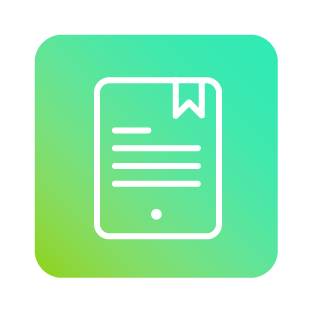
eLearning Terms
eLearning:
This versatile term often gets used in two main ways. Broadly speaking, it refers to structured learning delivered by electronic devices such as computers, tablets, and smartphones. More specifically, an eLearning course is a digital learning asset constructed from various individual elements like text, images, videos, and interactive quizzes.
💡 Go Pro: What is eLearning?
Shareable Content Object Reference Model (SCORM):
Just as you can’t play a Blu-ray in a VCR, eLearning courses need packaging rules to function properly on your learning system. SCORM solves this by wrapping courses into neat .zip files with all the tracking code required. While SCORM is showing signs of age, it’s still the baseline compatibility standard for most workplace training.
💡 Go Pro: What is SCORM?
Experience API (xAPI):
This is a ‘next-gen’ eLearning standard (though it was created back in 2013) that tracks both formal course activity and informal learning experiences. It’s perfect for organisations that care about skills application, not just seat time. However, despite all the initial hype, xAPI’s market penetration has been slower than initially anticipated.
💡 Go Pro: What is xAPI?
Aviation Industry Computer-based Training Committee (AICC):
Originally developed in 1988 for airplane safety training (hence the name), this is the grandfather of eLearning standards. It helped to pave the way for both SCORM and xAPI. While largely retired today, some legacy systems still use AICC’s ‘HACP’ protocol.
💡 Go Pro: Is AICC Still Relevant?
Learning Tools Interoperability (LTI):
LTI is an industry standard that lets different learning tools connect and share data, without the need for custom coding or scripts. It’s what enables your LMS to launch and integrate third-party tools (such as external content catalogues, interactive scenarios, plagiarism detectors, tutoring services, and so on).
Authoring Tool:
Your learning platforms need content. An authoring tool is the specialised software that makes this possible by transforming your slides, videos, and quizzes into interactive courses. It’s like Adobe Photoshop for eLearning production. These powerful tools are an instructional designer’s best friend. Speaking of which…
💡 Go Pro: What is an Authoring Tool?
Instructional Design:
Unfortunately, truly transformative learning experiences don’t just grow on trees. Somebody needs to create them. Instructional designers do this by blending cognitive psychology, pedagogy, and creative problem-solving to help bridge knowledge gaps. They’re your organisation’s highly-qualified learning architects.
💡 Go Pro: What is Instructional Design?
Mobile Learning:
Learning doesn’t have to be confined to classrooms or video calls. Mobile learning is learning that lives in your pocket. It’s designed specifically for smartphones and tablets, which means it’s accessible anytime, anywhere. Some learning technology vendors even offer dedicated mobile applications that make use of native smartphone functionality.
💡 Go Pro: Mobile Learning Essentials: A Beginner’s Guide
Adaptive Learning:
These intelligent systems adjust content and learning pathways in line with performance. For example, if a learner aces a quiz, the system may automatically advance them to the next learning tier. Likewise, if they struggle, it may serve up more foundational content. This keeps learners consistently within their Zone of Proximal Development.
💡 Go Pro: What is Adaptive Learning?
Synchronous Learning:
Synchronous means happening or existing at the same time. As such, a synchronous learning experience is one that takes place in real-time, with everyone participating simultaneously. This format mirrors your classic classroom environment or video call. It’s perfect for Q&A sessions, hands-on workshops, and collaborative group work.
Asynchronous Learning:
On the other hand, an asynchronous learning experience does not require real-time participation. As there’s no pre-set schedule, your learners can learn at their own pace. This usually involves instructional videos, eLearning content, discussion forums, and other learning assets. It’s great for the self-starters within your team.
💡 Go Pro: Synchronous vs Asynchronous Learning
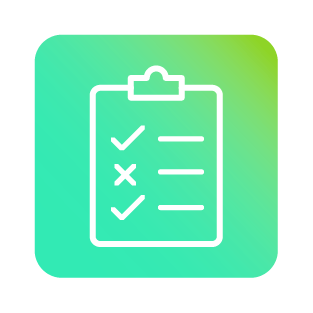
Assessment & Evaluation Terms
Formative Assessment:
These quick knowledge checks aim to course-correct learners in real-time, helping to guide their progress. They’re low-stakes quizzes, polls, and practice activities where the focus isn’t on grading. Instead, the aim is to check-in with learners, make sure they’re moving in the right direction, and provide useful feedback.
🔍 Keep Exploring: The Art of Quiz Design
Summative Assessment:
This is the ‘final boss’ of assessments. These are high-stakes evaluations that measure what learners have retained after completing their training. They could include certification tests, skill demonstrations, or other presentations that showcase competency validation and real-world readiness.
🔍 Keep Exploring: A Practical Guide to Assessing Your Learners
Needs Analysis:
Your learners have specific needs that your training programme should seek to address. Training needs analysis is the learning detective work that identifies the gap between current and desired performance. Like a doctor diagnosing before prescribing, it prevents ‘training for training’s sake’.
🔍 Keep Exploring: Training Needs Analysis: A Complete ‘How To’ Guide
Kirkpatrick Model:
When investing in training, you want to ensure your efforts create real value, not just wasted resources. This requires a clear evaluation framework, and that’s precisely what the Kirkpatrick Model provides. It’s a widely recognised, four level approach to assessing the effectiveness of your training initiatives.
🔍 Keep Exploring: The Kirkpatrick Model: A Step-by-Step Guide to Training Evaluation
Return on Investment (ROI):
Beyond the Kirkpatrick Model, you also need to establish the financial benefits of your learning programmes. To do this, you’ll need to weigh the monetary rewards (the value of increased sales, reduced errors, etc.) against your programme costs. A positive ROI means your training isn’t just informative — it’s profitable!
🔍 Keep Exploring: Everything You Need to Measure ROI

Useful Model Terms
70:20:10 Model:
What’s your learning diet? The 70:20:10 Model is a popular framework suggesting that effective individual development comes primarily from a blend of experiences, not just formal training. In fact, the break down is as follows:
- 70% on-the-job experiences (challenging tasks and assignments)
- 20% social learning (collaboration, mentorship, peer feedback)
- 10% formal training (courses, workshops, guides)
🚀 Level Up: The 70:20:10 Model: A Guide to Optimising Your Training Strategy
5 Moments of Need:
Effective learning isn’t just about what you learn, but when you learn it. The 5 Moments of Need is a performance-focused framework that identifies when your learners require this support:
- New (learning something for the first time)
- More (expanding existing knowledge)
- Apply (using skills in real situations)
- Solve (fixing real problems)
- Change (adapting to new processes)
🚀 Level Up: 5 Moments of Need: A Guide to Supporting Your Learners
ADDIE:
We do love an acronym in this industry! ADDIE is the classic instructional design ‘recipe’. It’s a widely used, systematic framework guiding content creators through a clear five-phase development process.
- Analyse (identify gaps and needs)
- Design (outline the solution)
- Develop (build your content)
- Implement (deliver the training)
- Evaluate (measure success)
🚀 Level Up: What is ADDIE: 5 Steps to Learning Excellence
Bloom’s Taxonomy:
Created by Benjamin Bloom, this popular pedagogical framework is designed to help you create effective learning objectives tailored to different levels of cognitive functioning. It classifies six hierarchical levels of thinking:
- Remember (recalling facts or concepts)
- Understand (explaining ideas in your own words)
- Apply (using information in new situations)
- Analyse (exploring the relationships between information)
- Evaluate (making value judgements on information)
- Create (using information to produce something new)
🚀 Level Up: Bloom’s Taxonomy: Master Your Learning Objectives
The Forgetting Curve:
Unfortunately for us learning professionals, knowledge is slippery. The Forgetting Curve, a psychological concept introduced by Hermann Ebbinghaus in the late 1800s, illustrates how quickly we lose newly acquired information if we don’t actively work to retain it. In fact, we forget:
- 50% of all new information within 1 hour
- 70% within 24 hours
- 90% within a week
🚀 Level Up: What is the Forgetting Curve?
Gagné’s Nine Levels:
Also known as the ‘Nine Events of Instruction’, Gagné’s Nine Levels offer a powerful, systematic framework for designing effective, event-driven learning experiences. It’s like building a ladder for your learners, taking them from curiosity, through to competency, and upwards towards mastery.
🚀 Level Up: Gagné’s Nine Events of Instruction: A Framework for Effective Learning
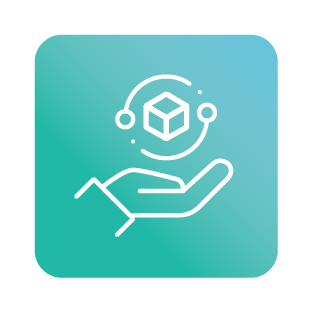
Future Tech Terms
Artificial Intelligence (AI):
Put simply, artificial intelligence (or AI), is the broad field of science and engineering focused on creating machines and computer programmes that can perform tasks that typically require human intelligence. For learning professionals, this means AI-powered content recommendations, automated admin tasks, and digital coaches (see below).
🤿 Deep Dive: A Practical Guide to AI in the World of Learning
Digital Coach:
Coaching is an effective approach to learning and development that has proven to be difficult to scale — until now. Digital coaches are AI-powered mentors that provide real-time guidance within learners’ workflows. They can help with goal-setting, offer constructive feedback, and adapt advice based on individual progress.
🤿 Deep Dive: Your Guide to AI-Enhanced Employee Coaching
Immersive Learning:
Future-focused tech like virtual reality (VR), augmented reality (AR), or realistic simulations plunge learners into hyper-realistic practice environments. Whether it’s perfecting public speaking in a virtual auditorium or safely troubleshooting hazardous equipment, this approach embodies the ultimate ‘learning by doing’ experience.
🤿 Deep Dive: Will Immersive Learning Revolutionise Learning Tech?
Augmented Reality (AR):
This immersive approach works by overlaying digital information onto the physical world through smartphones or smartglasses. Popular examples include Pokémon Go and Instagram filters. For learning and development, AR offers the powerful ability to deliver relevant information and instructions directly within the context where your teams need them most.
🤿 Deep Dive: Augmented Reality in Learning
Virtual Reality:
Unlike AR’s subtle enhancements, virtual reality experiences immerse learners in a fully digitised environment. This is ideal for creating realistic interactive scenarios, risk-free training environments, and remote collaboration opportunities. VR is a game-changing technology in L&D, although these solutions don’t come cheap.
🤿 Deep Dive: A Beginner’s Guide to Scenario-Based Learning
Final Words
There we have it. You’ve survived the acronym avalanche and have emerged with a much clearer understanding of the modern L&D and learning technology landscape. You’re now equipped to speak the language and understand the nuances!
Remember, the world of learning technology is ever-evolving, with new terms and concepts emerging regularly. Staying informed is crucial, which is why we’re committed to keeping this L&D Glossary updated with the latest essential definitions.
In the meantime, keep exploring, keep learning, and keep transforming your organisation’s potential. And most importantly, don’t let the buzzwords grind you down!
Did we miss your pet peeve buzzword? @ us here and we’ll add it in our next update!
Thanks for reading. If you’ve enjoyed this content, please connect with me here or find more articles here.
Now you can talk the talk, it’s time to truly walk the walk! Download ‘The L&D Professional’s Handbook’ now to access 165 tips designed to help you thrive in your role and elevate your impact.

